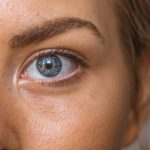A quick look at some of the most common types of eye diseases diagnosed and often treated at Piedmont EyeCare Associates in Charlotte
“Eye diseases” is a blanket term that refers to a host of diseases relating to the function of the eye. Below we describe some of the more common types of eye diseases and how they are generally treated. For more in-depth information, please speak with your eye care provider at Piedmont EyeCare Associates.
Blepharitis
Blepharitis is any inflammation to the eyelid margin of varying causes including, but not limited to bacterial eyelid infection, meibomian gland dysfunction (MGD), dry eyes, or parasites (Demodex). Common symptoms include burning, itching, watery, grittiness, or foreign body sensation. Left untreated, can lead to other complications such as hordeolum (stye), dry eyes, blurred vision, or overall redness.
Cataracts
A cataract is a common condition in which the natural lens behind the iris (colored part of the eye) becomes cloudy or opaque and obstructs one’s vision, generally slowly over time. Cataracts can affect people of all ages as some are born with cataracts, while others can develop over time, or due to certain medications, UV exposure, or trauma. If a cataract starts to affect quality of life, then referral to an eye surgeon for removal is typically warranted. Prognosis is excellent considering it is the most commonly performed surgery in the US.
Conjunctivitis (Pink Eye)
Conjunctivitis, also known as pink eye, is an infection or inflammation of the conjunctiva – the thin, protective membrane that covers the surface of the eyeball and inner surface of the eyelids. Caused by bacteria, viruses, allergens and other irritants like smoke and dust, pink eye is highly contagious and is usually accompanied by redness in the white of the eye and increased tearing and/or discharge.
While many minor cases improve within two weeks, some can develop into serious corneal inflammation and threaten sight. If you suspect conjunctivitis, visit your eye care provider at Piedmont EyeCare Associates for an examination and treatment.
Diabetic Eye Disease
Diabetic eye disease is a general term for a group of eye problems that can result from having type 1 or type 2 diabetes, including diabetic retinopathy, cataracts and glaucoma.
Often there are no symptoms in the early stages of diabetic eye disease, so it is important that you don’t wait for symptoms to appear before having a comprehensive eye exam. Early detection and treatment of diabetic eye disease will dramatically reduce your chances of sustaining permanent vision loss.
Diabetic Retinopathy
This is damage that is done to the blood vessels in the eye secondary to diabetes. It is the leading cause of blindness among working-age individuals. The eye is unique in that it’s the only part of the body in which we can view the blood vessels without having to image them. Elevated blood sugar can acutely fluctuate a person’s vision and these changes over time can cause bleeding and leakage of blood vessels. If damage is found in the eye, then damage is happening throughout the entire body. This is why Piedmont EyeCare recommends a dilated yearly eye exam so we can thoroughly evaluate for any changes to the blood vessels and will send your primary care doctor or endocrinologist our findings.
Dry Eye Disease
A very common condition in which there are insufficient tears to lubricate the eye. Quality tears are necessary for maintaining clear vision and a healthy front surface of the eye. Problems occur when people either do not produce enough tears, or have poor quality tears. Symptoms include irritated, gritty, burning, watering, fluctuating and blurred vision. Development of dry eyes can have varying causes such as age, gender, medications, medical conditions, or environmental conditions. Piedmont EyeCare specializes in advanced treatment for dry eyes and is excited to be able to offer lipiflow treatment to our patients that will benefit from this advanced procedure.
Glaucoma
Often called “the silent thief of sight,” glaucoma is an increase in the intraocular pressure of the eyes, which causes damage to the optic nerve with no signs or symptoms in the early stages of the disease. If left untreated, glaucoma can lead to a decrease in peripheral vision and eventually blindness.
While there is no cure for glaucoma, there are medications and surgery available that can help halt further vision loss. Early detection and regular eye exams are vital to slowing the progress of the disease.
Macular Degeneration
Macular degeneration is a chronic, progressive disease that gradually destroys sharp central vision due to a deterioration of the macula, a tiny spot in the central portion of your retina comprised of millions of light-sensing cells. Because it is so commonly associated with aging, it is also known as age-related macular degeneration (AMD). There are two forms of AMD called “dry,” most common and with no known treatment, and “wet,” less common and treated with laser procedures. Genetic testing is now available to help identify those most likely to develop “wet” macular degeneration.
In most cases, reversing damage caused by AMD is not possible, but supplements, protection from sunlight, eating a balanced diet and quitting smoking can reduce the risk and progression of macular degeneration. For suggestions, speak with your eye care provider at Piedmont EyeCare Associates.
Piedmont EyeCare Associates has the experience and equipment necessary to diagnose and often treat the eye diseases detailed above, as well as many other eye diseases, at our office in Charlotte. For more information please schedule an appointment with your optometrist, and we’ll be in touch with you shortly.



